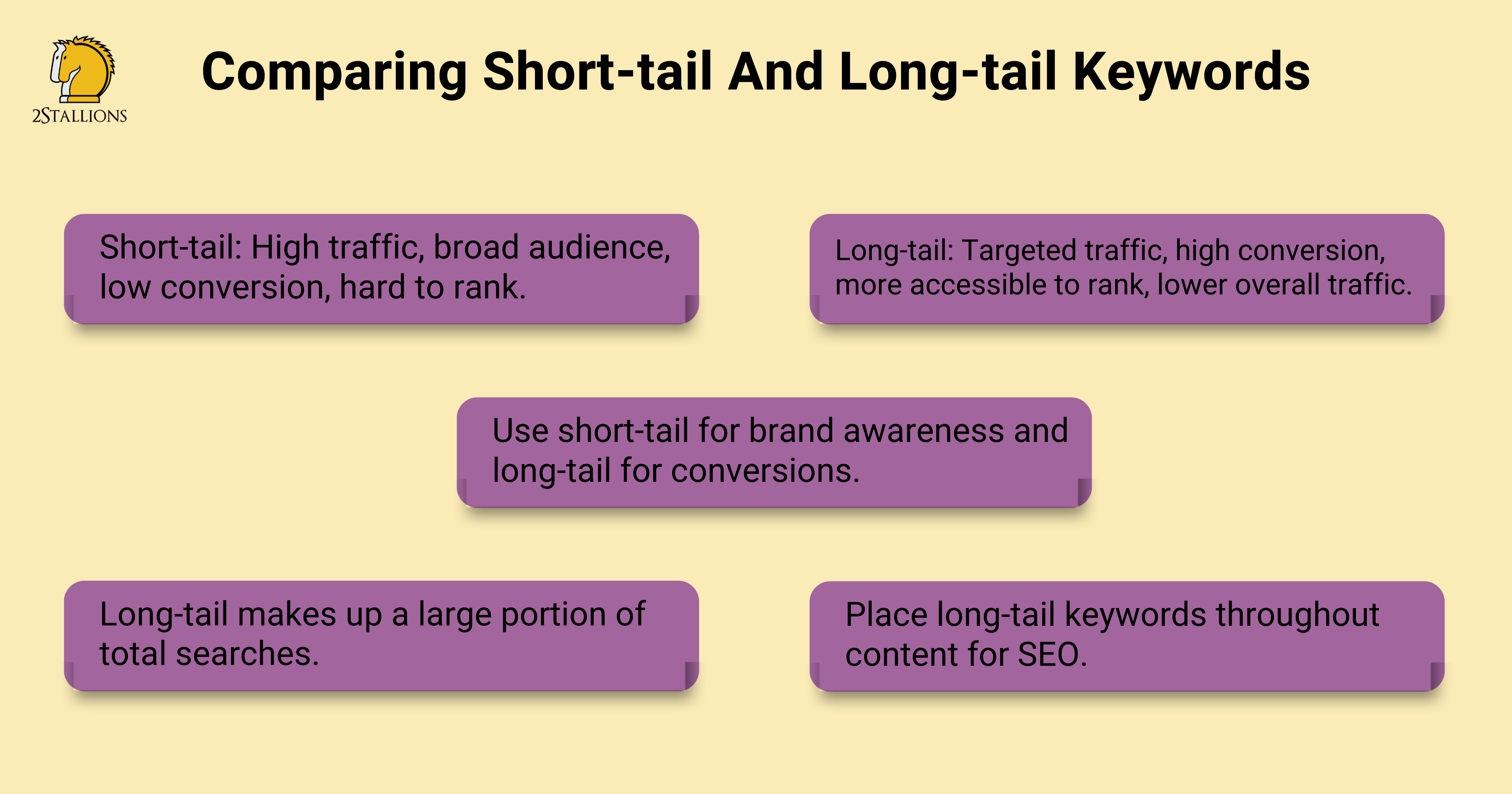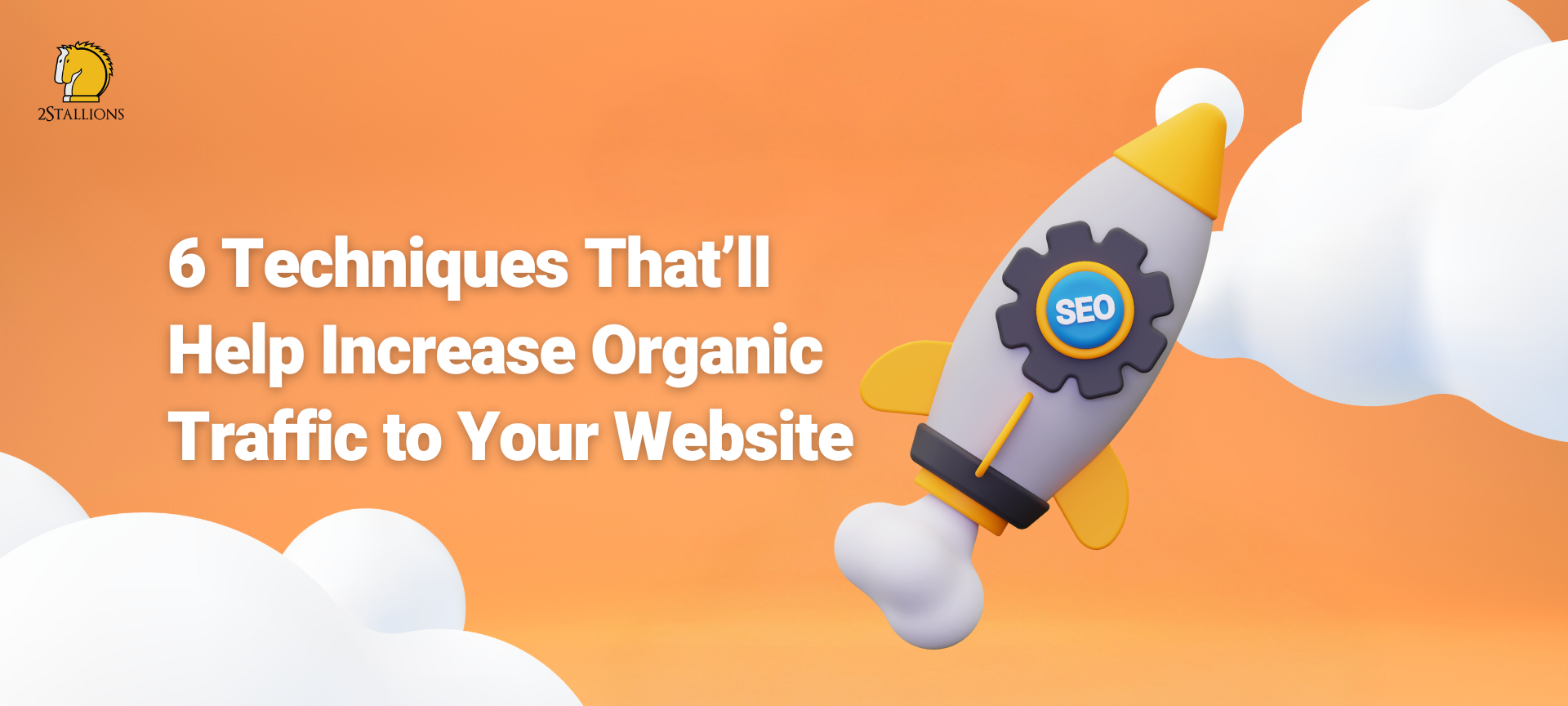SHARE

Keywords play a crucial role in search engine optimisation (SEO) by helping websites rank higher in search engine results. When it comes to keywords, there are two main types to consider: short-tail keywords and long-tail keywords. But which ones should you target for your website? Let’s dive into the basics of keywords and explore the differences between these two types so you can make an informed decision.

Understanding The Basics of Keywords
Before delving into the differences between short-tail and long-tail keywords, let’s first define what exactly keywords are. In simple terms, keywords are the words or phrases that people use to search for information on search engines like Google. These can be single words or longer phrases.
Keywords play a crucial role in search engine optimisation (SEO) as they help search engines understand the content of a webpage and match it to relevant search queries. By strategically incorporating keywords into your website’s content, you can improve its visibility and attract more organic traffic.
Now, let’s explore the fascinating world of keywords in more detail.
What Are Short-Tail Keywords?
Short-tail keywords, also known as head keywords, are brief and commonly used as more general search terms. They usually consist of one to three words. For example, “shoes” or “digital camera” are considered short-tail keywords.
These keywords attract a more extensive search volume as they are broad. Still, they also face high competition from other websites vying for the exact keywords. This means that ranking for short-tail keywords can be challenging, especially for new or small businesses trying to establish their online presence.
However, short-tail keywords can be valuable for businesses that offer a wide range of products or services. They can help attract a large audience and increase brand visibility. It’s important to note that short-tail keywords may not always convert as well as long-tail keywords, as they are often used by searchers who are in the early stages of their buying journey and are still exploring their options.
Defining Long-tail Keywords
Long-tail keywords, on the other hand, are more specific and consist of longer phrases containing multiple words. They are highly targeted and usually have a lower search volume compared to short-tail keywords.
Examples of long-tail keywords include “buy black leather shoes online” or “best digital camera for landscape photography.” These keywords provide more context and indicate that the searcher is looking for something specific. As a result, they often bring in more qualified leads who are closer to making a purchase decision.
While the search volume for long-tail keywords may be lower, they have several advantages. Firstly, they face less competition, making it easier to rank higher in search engine results pages (SERPs). Additionally, long-tail keywords tend to have a higher conversion rate, as they attract users who are further along in their buying journey and have a clearer idea of what they want.
It’s worth noting that long-tail keywords can also help improve the overall user experience on your website. By creating content that aligns with specific search queries, you can provide valuable and relevant information to your audience, increasing their satisfaction and engagement.

The Significance of Keywords in SEO
The way search engines use keywords to rank websites has evolved, but keywords still hold importance in SEO. Understanding how search engines utilise keywords can help you strategise your SEO efforts effectively.
How Search Engines Use Keywords
Search engines use complex algorithms to analyse the relevance and quality of websites when a user performs a search. Keywords are one of the factors that search engines consider. Search engines examine various elements on a website, such as titles, headings, and content, to determine their relevance to the keyword being searched. Websites employing well-researched and targeted keywords often rank higher in search results, improving their visibility to potential visitors.
The Role of Keywords in Content Strategy
Keywords also play a vital role in your content strategy. By incorporating relevant keywords into your website’s content, you can optimise it for search engines, making it more likely to appear in search results for related queries. However, it’s essential to strike a balance. Avoid keyword stuffing, as this can lead to penalties from search engines and make your content less appealing to readers. Instead, focus on creating high-quality, informative content that integrates keywords naturally.

Comparing Short-tail And Long-tail Keywords
Now that we have a basic understanding of keywords and their significance in SEO let’s compare the pros and cons of short-tail and long-tail keywords to help you decide which ones to target.
The Benefits of Short-tail Keywords
Short-tail keywords have their own set of advantages. Due to their broader nature, they can potentially attract a larger volume of traffic to your website. Additionally, ranking for short-tail keywords can help increase brand visibility and build brand recognition. However, it’s worth noting that competition for short-tail keywords is fierce, making it more challenging to secure a top ranking.
The Advantages of Long-tail Keywords
Long-tail keywords offer their own set of advantages that are worth considering. By targeting specific, niche phrases, you can attract a more targeted audience to your website. These users are more likely to convert into customers as they are actively searching for something specific. Furthermore, the competition for long-tail keywords is often lower, giving you a better chance of ranking higher in search results.

Deciding Which Keywords To Target
When deciding which keywords to target, several factors come into play.
Factors To Consider When Choosing Keywords
- Relevance: Ensure your keywords are highly relevant to your website’s content and target audience.
- Competition: Evaluate the level of competition for each keyword to gauge your chances of ranking.
- Search Volume: Consider the search volume for both short-tail and long-tail keywords to understand their potential impact.
- User Intent: Analyse the intent behind each keyword to align it with your website’s goals and objectives.
Keyword Research Tools And Techniques
Utilise keyword research tools like Google Keyword Planner, SEMrush, or Moz Keyword Explorer to find relevant keywords for your website. These tools provide valuable insights into search volume, competition, and related keywords, helping you make well-informed decisions.

Strategies For Targeting Short-tail And Long-tail Keywords
While short-tail and long-tail keywords have their advantages, your overall keyword strategy should involve a combination of both to maximise your website’s visibility.
Best Practices For Targeting Short-tail Keywords
When targeting short-tail keywords, aim to create high-quality content that covers the broad topic and incorporates variations of the keyword. Use informative headings, subheadings, and bullet points to break up the content and make it more readable. Additionally, consider optimising your meta tags, URLs, and image alt text to include relevant short-tail keywords.
Tips For Targeting Long-tail Keywords
To effectively target long-tail keywords, create specific and informative content that addresses the searcher’s intent. Use long-tail keywords naturally throughout your content, including in headings, subheadings, and body text. Additionally, consider creating dedicated landing pages or blog posts that specifically target long-tail keywords to attract highly targeted traffic.
In conclusion, both short-tail and long-tail keywords have their advantages and should be part of your overall SEO strategy. Evaluate your website’s goals, target audience, and competition to determine the right balance of keywords for your website. By understanding the differences and using the appropriate techniques, you can effectively target keywords to improve your website’s visibility and attract the right audience.
Frequently Asked Questions About Short-tail Keywords And Long-tail Keywords
When Should Short-tail And Long-tail Keywords Be Targeted?
Short-tail keywords are best used when the goal is to rank for generic terms to increase brand awareness rather than conversions. They are more suitable when you have a highly authoritative domain or want to target your company’s branded keywords. On the other hand, long-tail keywords are more specific and can attract a more targeted audience with less competition. They work closer to the bottom of the funnel, and it is easier to convert leads into customers.
Why Should You Target Long-tail Keywords?
Long-tail keywords are beneficial to target because they are easier to match with search intent. They provide higher conversion rates as they are much more tailored to what the user is looking for. Long-tail keywords are usually more specific and can indicate a higher intent to buy, which is valuable for site owners looking to monetise their content.
Which Is Searched More, Long or Short Tail Keywords?
Short-tail keywords are searched more frequently due to their generic nature. However, when all the long-tail keywords are added together, they make up a large chunk of all Google searches.
Where Should You Try To Place Long-tail Keywords?
Long-tail keywords should be included in your headlines and optimised in your meta descriptions. They should be used throughout your content and you should create content around your long-tail keywords. Long-tail keywords are also valuable for local SEO.









